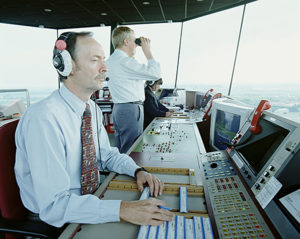Surface Safety & Pilot-Controller Communications
By Nick DeLotell
FAA Commercial Operations Branch
Several recent Runway Incursions have been attributed to communications. The most important concept in pilot-controller communications is understanding. Pilots must acknowledge each radio communication with Air Traffic Control (ATC) by using the appropriate aircraft call sign and confirming all hold short instructions. Brevity is important, and transmissions should be as concise as possible while still ensuring that the controller understands what you want to do. Also, you must understand exactly what ATC wants you to do. The Aeronautical Information Manual’s Pilot/Controller Glossary can help you learn what certain words or phrases mean. Good phraseology enhances safety, and is the mark of a professional pilot. Jargon, chatter, and “CB” slang have no place in ATC communications.
Here are some general tips for good aviation radio technique:
• Listen before you transmit. Except for a few situations where some frequency overlap occurs, if you hear someone else talking, attempting to transmit will be futile. You will probably jam (“step on”) someone else’s attempt to transmit, causing a need to repeat the call. If you have just changed frequencies, first pause and listen to make sure the frequency is clear.
• Think before keying your transmitter. Know what you want to say and, if it is lengthy, (e.g., a flight plan or IFR position report), jot it down so you do not waste transmission time trying to remember what you need to say.
• Position the microphone very close to your lips. After pressing the mike button, a slight pause may be necessary to be sure that the first word is transmitted. Speak in a normal conversational tone.
• Be patient. When you release the transmit button, wait a few seconds before calling again. The controller may be jotting down your number, looking for your flight plan, transmitting on a different frequency, or selecting the transmitter to your frequency.
• Be alert to the sounds, or lack of sounds, in your receiver. Check your volume, recheck your frequency, and make sure your microphone is not stuck in the transmit position. Frequency blockage can occur for extended periods of time due to unintentional transmitter operation. This type of interference is commonly referred to as “stuck mike,” and controllers may refer to it in this manner when attempting to assign an alternate frequency.




